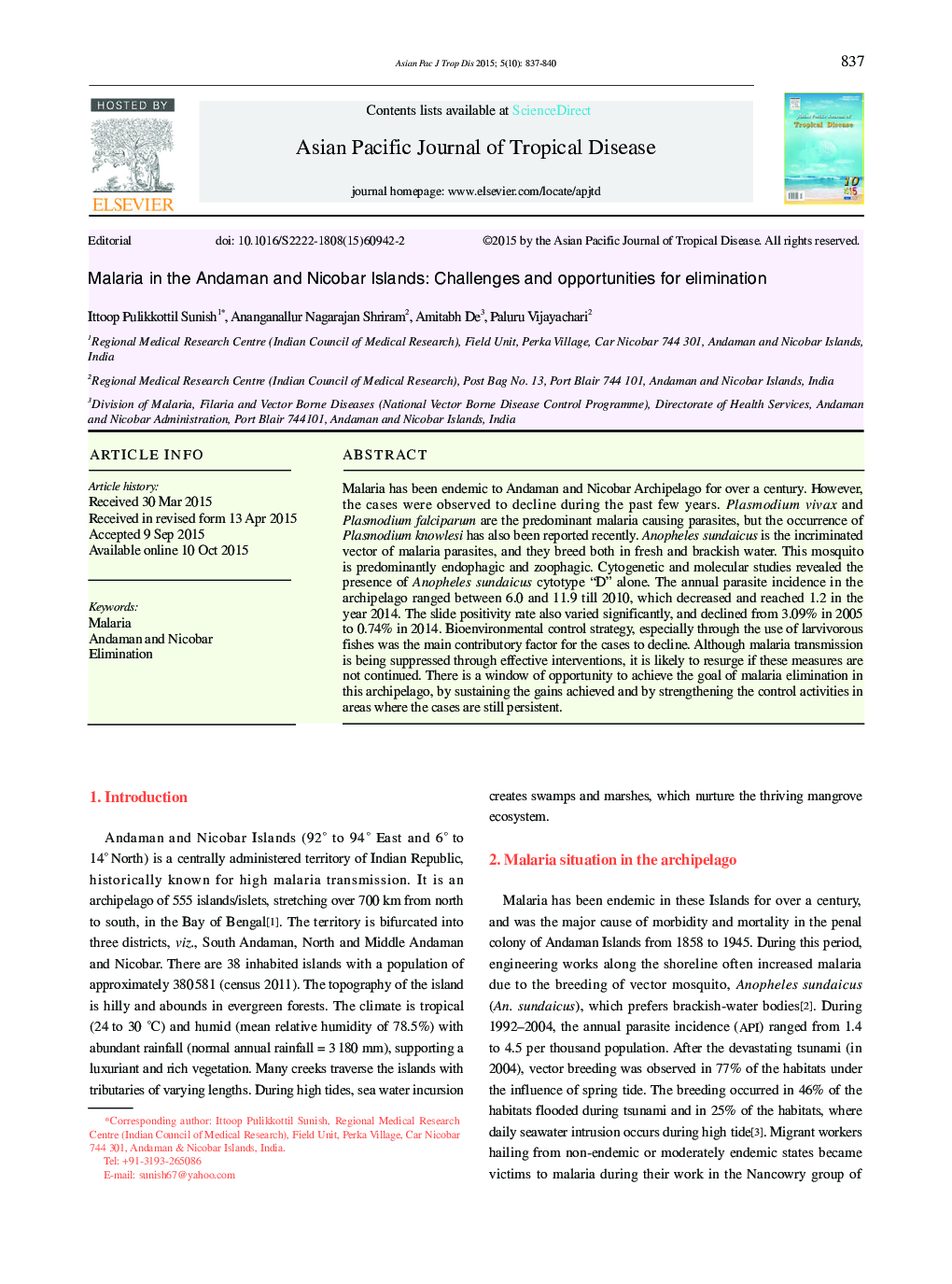| Article ID | Journal | Published Year | Pages | File Type |
|---|---|---|---|---|
| 3454042 | Asian Pacific Journal of Tropical Disease | 2015 | 4 Pages |
Malaria has been endemic to Andaman and Nicobar Archipelago for over a century. However, the cases were observed to decline during the past few years. Plasmodium vivax and Plasmodium falciparum are the predominant malaria causing parasites, but the occurrence of Plasmodium knowlesi has also been reported recently. Anopheles sundaicus is the incriminated vector of malaria parasites, and they breed both in fresh and brackish water. This mosquito is predominantly endophagic and zoophagic. Cytogenetic and molecular studies revealed the presence of Anopheles sundaicus cytotype “D” alone. The annual parasite incidence in the archipelago ranged between 6.0 and 11.9 till 2010, which decreased and reached 1.2 in the year 2014. The slide positivity rate also varied significantly, and declined from 3.09% in 2005 to 0.74% in 2014. Bioenvironmental control strategy, especially through the use of larvivorous fishes was the main contributory factor for the cases to decline. Although malaria transmission is being suppressed through effective interventions, it is likely to resurge if these measures are not continued. There is a window of opportunity to achieve the goal of malaria elimination in this archipelago, by sustaining the gains achieved and by strengthening the control activities in areas where the cases are still persistent.
